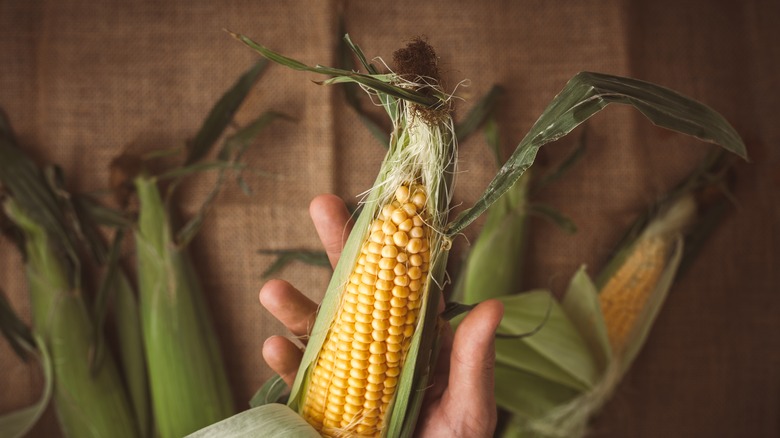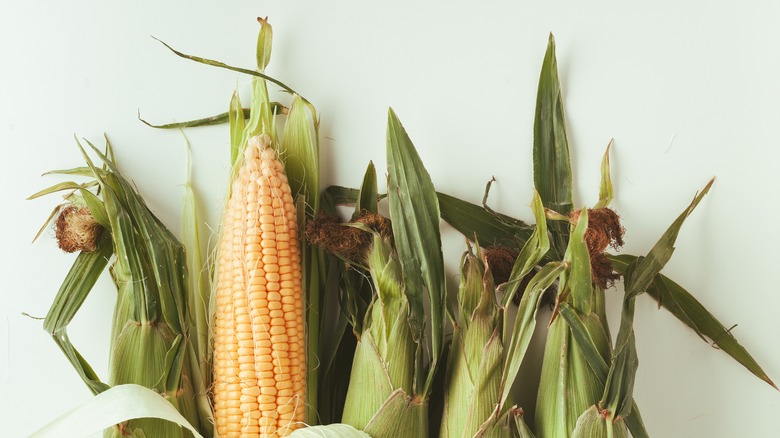How The Corn Silk Can Help You Pick Out The Best Ears Of Corn
The United States is the world's largest grower of corn, planting 90 million acres of corn per year with Iowa and Illinois producing the most out of all fifty states (via U.S. Department of Agriculture). With the massive amounts of corn we accumulate each year, it is no wonder we have so many corn-related favorite foods including grilled corn, corn fritters, corn salad, and corn pudding, and this doesn't even include our favorite foods made from cornmeal (looking at you cornbread). We could keep going like Bubba in "Forrest Gump," but we will stop there.
It is almost ridiculous how much our lives revolve around the crop, but who can blame us? Corn is available at the grocery store year-round, even though it's especially delicious in the summer months when it is in peak season. Buying good quality corn is essential to the outcome of all of those recipes listed above, but if we aren't allowed to shuck our produce before we buy it, how can we pick out the perfect ear of corn?
You've got to feel it out
When trying to pick out the best ears of corn, Kitchn recommends not just looking at the tasseled end of the corn but feeling it up a bit. Most of the time, getting handsy with your produce is frowned upon, but in this case, the feel of the corn's silk can tell you a lot.
Don't be shy about handling your corn, you should feel for a tassel that is "medium thick" and "slightly rounded" and not one that is overly plump because that can indicate over-ripeness. Another advantage to feeling up the corn is that you can discover any hidden sliminess that indicates the crop is past its prime.
But if it's not slimy, how does the tasseled end of the corn tell you how ripe it is? According to The Farmer's Life, corn silk is the female part of the corn plant while the tassel is the male part. As the male tassel begins to enlarge, the corn silk is abandoned below, and as the ear of corn ripens the tassel will become bigger (via Beriqo). Clearly, the tassel can tell you a lot, so there's no need to remove the corn's husk or poke the kernels because other customers would be less likely to buy it, and we don't want the precious corn to go to waste.

